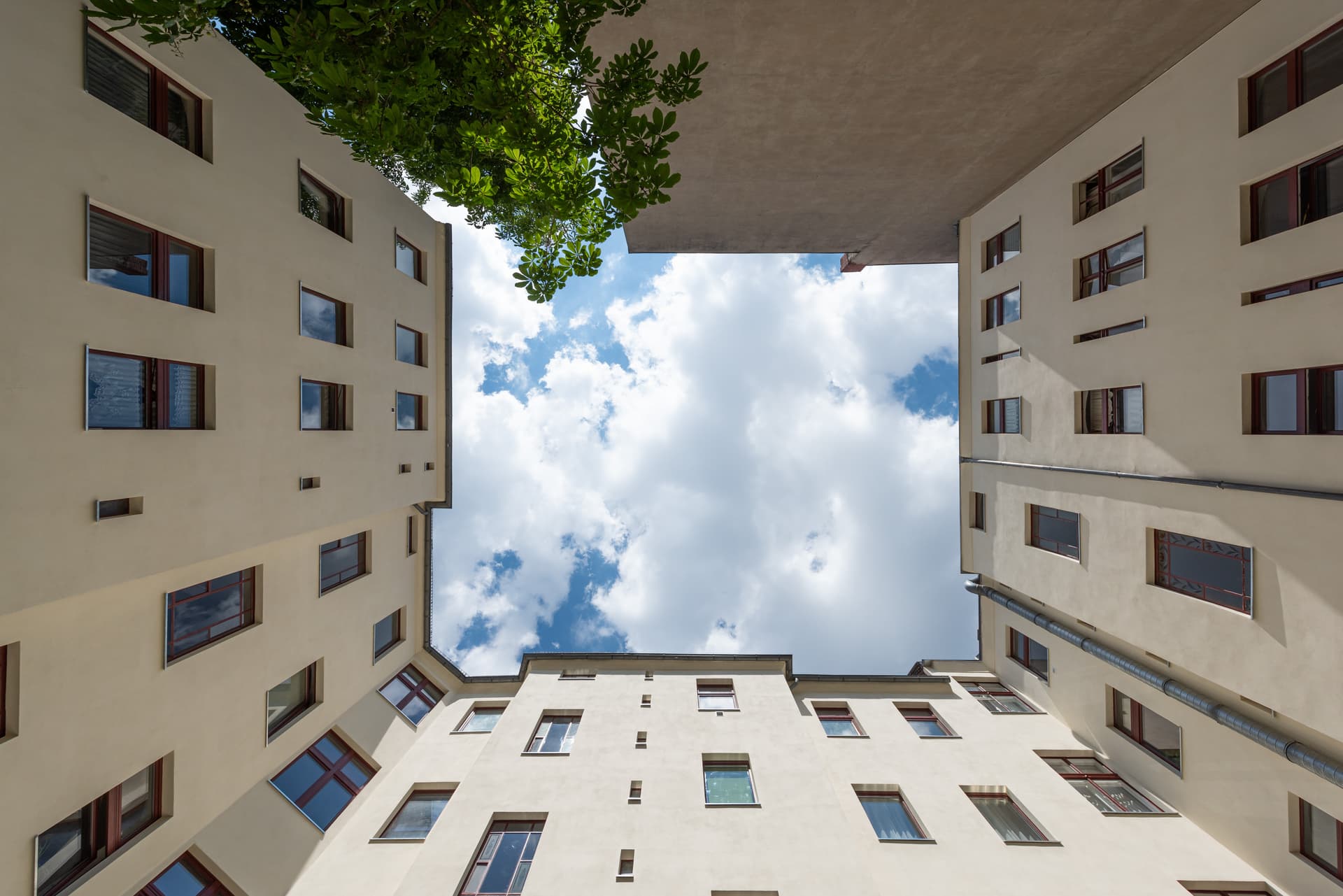Have you already invested in real estate?

14.
January 2022
Looking back at 2020, when the pandemic swept across Germany, and checking the subsequent developments in 2021, it is safe to say that homeownership has gained in value and esteem more than many other things. People’s appreciation of their homes and of homeownership has increased significantly. Few will be able to recall a time when they spent so much time—alone or together—within their own four walls. Many took advantage of this time to improve, redecorate or remodel their homes.
Making it easier to buy a home
It would be interesting to find out whether life in the times of COVID inspired the desire among Germans, a nation of tenants, to invest in homeownership and to make the dream of a home of one’s own come true at long last. For the time being, the homeownership rate in the Federal Republic of Germany remains one of the lowest in Europe, undercut only by Switzerland. Less than half of all Germans own the homes they live in. While the homeownership rate is higher in the German countryside, the residents of the country’s cities prefer to rent rather than buy, and to buy in the suburbs rather than in the city proper. Possible reasons for this include the high incidental acquisition costs, the lack of funds to make the down-payment, and the heightened demand for residential property in Germany’s metro areas. Which is unfortunate because an increase in homeownership rate would have the positive side effect of alleviating the wealth inequality, or so the ACCENTRO Housing Cost Report 2021 for Germany suggests. Just think of such keywords as wealth accumulation, pension scheme and value retention through real estate.
Buying homes remains an attractive proposition
In the 81 cities covered by the ACCENTRO Homeownership Report 2021, a total of 123,299 condominiums changed hands in 2020. Although this implies a drop by 4.4 percent compared to 2019, revenues increased by 3.3 percent to 36.027 billion euros. This means that the market for residential real estate has lost none of its appeal. And it remains particularly attractive for buyers from inside Germany, rather than international ones, with domestic buyers accounting for around 87 percent of all homes acquired nationwide last year.
From buy-to-let investor to owner-occupier – all investing in residential real estate
To buy residential property remains lucrative and in focus for national and international buyers regardless of their different intentions. Buyers, including first-time buyers, who wish to owner-occupy the homes they acquire spend their money on a profitable and forward-looking investment. Because investing in a home will bolster your pension plan, lower your fixed costs in retirement, ensure the value retention or appreciation of your capital, and act as inflation protection. In other words, while owner-occupiers inhabit a home they own outright, usually as permanent place of residence, buy-to-let investors are motivated by other reasons and strategies to buy residential property.
Investing strategically in residential real estate – taking the professional approach
Homeownership is an inflation-safe investment that will deliver the advantages of owner-occupancy not only for owner-occupiers. For buy-to-let investors, too, owning residential real estate represents a stable investment, inflation protection and a safeguard against the kind of fluctuations in value that equities tend to be exposed to. Investors may choose to buy residential properties in order to let or to resell later on when they find the perfect home, for example, and need the money from the sold apartment to fund the down-payment. It is worth remembering that Germany’s property speculation tax will be waived if you sell after ten years of ownership. Another option is to buy a home, refurbish and remodel it in order to resell it swiftly – in this case subject to property speculation tax.
Creating incentives for young families
Opting for homeownership and thus creating a permanent home for the entire family has always been an enticing dream for young families. According to the ACCENTRO Housing Cost Report 2021, the homeownership rate was particularly quick to decline among young households in recent years. Why is that? Homeownership requires equity capital. But since the capital adequacy requirements have climbed in sync with property prices over the past years, they often represent an insurmountable obstacle for young households. It is the job of the body politic to improve the parameters in order to make it easier for young people to embrace the idea of homeownership. Conceivable ways of doing so include, for example, a waiver of the incidental acquisition costs or, as in the UK, the combination of an allowance and a tiered tax rate for the stamp duty land tax (Source: ACCENTRO Housing Cost Report 2021).
Consulting experts and mimicking the behaviour or real pros
Seasoned investors gravitate toward tangibles in general and specifically stable-valued real estate. But investing in real estate is open even to many people who have not come into an inheritance or have the necessary cash on hand. In fact, it is often more realistic than many assume to invest in a home – and to become a first-time buyer, an owner-occupier or a buy-to-let investor, and thus to take a strategic approach to homeownership. Industry experts are keeping a close eye on Germany’s homeownership rate and its positive ramifications for capital formation on the national level. Buying property is a sound decision on top of the times, and it is an investment rewarded both in the present and future. Quite understandably, people find it hard to take the step. This is precisely where experts come in, whose job it is to make realistic assessments of risks and benefits for prospective buyers, to help overcome hurdles, and to determine what is feasible in the case at hand.